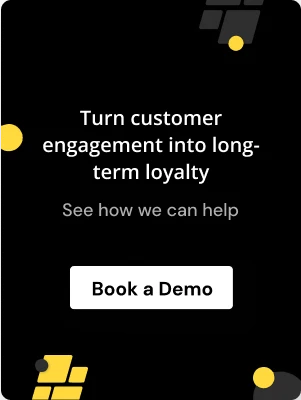.avif)
.avif)
Introduction
In the fiercely competitive world of direct-to-consumer businesses, customer loyalty has emerged as the ultimate differentiator. By fostering a strong relationship with your customers, you can not only retain them but also unlock a wealth of growth opportunities. One powerful tool that can help you achieve this goal is the implementation of a well-defined loyalty program. In this blog, we will explain how you can adapt your D2C business to loyalty programs, unlocking the secrets to increased customer lifetime value, brand advocacy, and sustainable growth.
Understanding the Power of Loyalty Programs for D2C Businesses
Loyalty programs have proven to be invaluable assets for D2C businesses, offering numerous benefits. Here are a few compelling reasons why you should consider implementing a loyalty program;
- Increased Customer Retention: Loyalty programs incentivise customers to continue engaging with the brand. This reduces churn and fosters long-term relationships.
- High Customer Lifetime Value (CLV): By encouraging repeat purchases and rewarding loyal customers, brands can maximise the lifetime value of each customer.
- Valuable Customer Data: Reward & loyalty programs provide insights into customer preferences, purchase behaviour, and engagement patterns, enabling data-driven decision-making.
- Brand Advocacy: Happy & rewarded customers are more likely to become brand advocates, driving referrals and positive word of mouth.
Designing An Effective Loyalty Program For Your Business
- A Well-defined Program Structure: Decide how you would like to reward your customers, through tiers & earning mechanisms that should align with your business and customer expectations.
- Offer Compelling Rewards: Provide rewards that truly resonate with your customers, such as exclusive discounts, early access to new products, or personalised experiences.
- Leverage Gamification: Make your rewards fun, and include elements of gamification, such as progress bars, achievement badges, or level-ups to make the program more engaging & enjoyable.
- Seamless Integration: Ensure that your loyalty program seamlessly integrates with your existing e-commerce platform, customer relationship management (CRM) system and marketing channels.
Promoting & Optimising Your Loyalty Program
Simply implementing a loyalty program isn't enough; The brand should actively promote and optimise it to maximize it's impact. Here is how you can achieve that;
- Multiple channel promotion: Utilise your website email marketing social media, and other channels to raise awareness and encourage enrollment in your loyalty program.
- Personalised Communication: Leverage customer data to deliver personalized messages, recommendations, and rewards that resonate with individual preferences.
- Continuous Improvement: Regularly analyse program performance, customer feedback, and Industry trends to identify areas for improvement nd adapt to the program accordingly.
- Strategic Partnership: Explore opportunities for strategic partnership with complementary brands or services to enhance the value propositions of your loyalty program.
To illustrate the power of loyalty programs, let's explore a few real-world examples of D2C brands that have successfully implemented and leveraged these programs:
- Glossier loyalty program: This program offers early access to new products exclusive discounts and personalized recommendations based on customer preferences and purchase history.
- Sephora Beauty insider: Sephora's tiered loyalty program rewards customers with points for purchases, which can be redeemed for exclusive rewards, personalized experiences, and special events.
- Warby Parker Pupil Program: Warby Parker's program rewards customers with points for purchases, social media engagement, and referrals, which can be redeemed for future purchases or donated to charitable causes.
Conclusion
Adapting to a strategic loyalty program can be a game changer, fostering long-lasting customer relationships, driving repeat purchases, and unlocking sustainable growth. By carefully designing, promoting, and optimising your loyalty program, you can create a loyal customer base that serves as a powerful asset for your brand. Embrace the power of a loyalty program today and watch your D2C business thrive in the fiercely competitive e-commerce marketplace.
FAQs
Start Building Customer Retention That Lasts


.jpeg)

